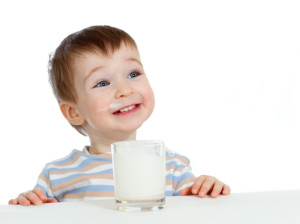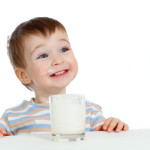Does Canadian Milk Contain Hormones?
/One of my favourite parts of my work is busting nutrition myths. There are so many out there that I know my job will never be done. The reality is that most people get their nutrition information from talking with friends and searching the internet. The problem is that often people spread myths unknowingly. And, the internet is an amazing place with all sorts of nutrition information – from fantastic (I’m sharing this with you over the internet after all), to complete fantasy, and everything in between. Sometimes the issue is that information has been taken out of context and when miss-applied leads to myths. One common myth is Canadian milk contain hormones.
The myth comes from the fact that the Canadian and US milk supplies are different.
Here in Canada, bovine growth hormone is not allowed.
Let me repeat that. Growth hormone is not allowed in dairy from Canadian cows. This has been the national regulations since 1999. The situation in the US is very different. In the US, growth hormone is allowed in conventional milk but not allowed in organic milk.
Growth hormone increases the amount of milk that each cow makes, which means you get more milk from keeping fewer cows, which in turn means cheaper milk. It’s one of the reasons that dairy products are cheaper in the US. But it’s only cheaper if you compare US milk containing growth hormone to Canadian milk that is hormone-free, which is kind of like comparing apples to oranges. A recent study compared hormone-free milk in the US to our Canadian milk (i.e. an apples-to-apples comparison). It found that US hormone-free milk is actually more expensive than Canadian milk.
Does this mean that all dairy products in Canada are hormone free? Unfortunately no. Currently, dairy products imported from the US are not required to be bovine growth hormone-free. US-imported dairy products will increase as a result of the new Trans-Pacific Partnership that the federal government recently signed. To find Canadian dairy products, look for the little blue and white cow symbol (that usually says “100% Canadian Milk”).
Now I want to be clear, I’m not writing this article to convince you to buy non-organic dairy. I completely respect your decision to choose only organic dairy or to be dairy-free. There can be many other factors for your decisions, such as pesticide use and animal rights issues, to name two. I just want you to make your decision based on correct information.
Get my e-newsletter so that you get all my child nutrition myth busting



 Recently a parent asked me this question: “How much cow’s milk to offer toddlers. Do you allow them to regulate/drink as much as they want or just fill the cup up once and then when it's empty that's it? Being only 17 months, he can fill up pretty quick on milk during the meal, but I also don't want to be taking it away. I would prefer to just allow him to self regulate, but not sure what to do once the sippy cup is empty.”
Recently a parent asked me this question: “How much cow’s milk to offer toddlers. Do you allow them to regulate/drink as much as they want or just fill the cup up once and then when it's empty that's it? Being only 17 months, he can fill up pretty quick on milk during the meal, but I also don't want to be taking it away. I would prefer to just allow him to self regulate, but not sure what to do once the sippy cup is empty.”
